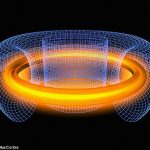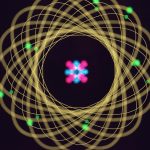
An international team attempts to gain a better understanding of fusion reactors
Sunday, September 16, 2018 by Edsel Cook
http://www.futuresciencenews.com/2018-09-16-international-team-gain-a-better-understanding-of-fusion-reactors.html

Researchers from around the world have come to the university town of Greifswald, Germany to run tests on one of the biggest and most complex fusion reactors ever built. Their latest experiment campaign could help speed up the predicted timetable for practical fusion power, an article in Science Daily stated.
The Wendelstein 7-X stellarator is the pride and joy of the Max Planck Institute of Plasma Physics in Greifswald. It is the biggest example of its kind, a stellarator being a type of fusion reactor that has gained new interest in recent years.
In addition to their current batch of new experiments, the international research team is also reviewing data from the first experiment campaign in 2016. Together with the findings of their new campaign, they hope to better understand the still-obscure science of thermonuclear fusion.
The study’s author, Shaocheng Liu, published his team’s findings in the science journal Physics of Plasmas. In the report, he and his teammates presented the first detailed description of the turbulent plasma found at the outer edge of the stellarator. (Related: MIT researchers working on a nuclear fusion superconductor that will generate carbon-free limitless energy within 15 years.)
Plasma turbulence in fusion reactors could be key to practical electric production
The Wendelstein 7-X reactor works by bringing ionized helium up to 122 million degrees Fahrenheit (50 million degrees Celsius). The incredibly hot helium is then contained by powerful magnets made from superconductors that are kept at a very cold -454 million degrees F (-270 million degrees C).
The superconducting magnets generate magnetic fields that are shaped like helices. This magnetic toroid traps the helium ions within it.
The designers of the Wendelstein 7-X took great care in optimizing the fields that comprise the toroidal shape. High-speed charged particles cannot penetrate its surface.
However, the heated plasma confined within the magnetic toroidal field often undergoes turbulence. These disturbances send heat and particles moving across the surfaces of the toroid. Eventually, the disturbed particles will hit the first wall that envelops the plasma.
A better understanding of the traits of the disruptive turbulence would lead to the creation of more practical fusion reactors that can produce electrical power. While it is very advanced, the Wendelstein 7-X remains an experimental device, a stepping stone to a full-fledged design.
“Particles need to be transported to the target, to the outside, and this edge region is very important for particle confinement,” wrote Liu in the report.
First ever measurements of plasma turbulence in new stellarator
In their experiment, Liu’s team took the first-ever measurements of the plasma turbulence at the edge of the stellarator. They used a combined probe head on the multi-purpose manipulator of the reactor to determine the characteristics of this scrape-off layer.
They reported three items of interest about the plasma turbulence. The first is that the turbulence appeared to propagate in the same direction that the helium ions took.
The second is that the spectrum of the turbulence covers the broadband range of frequencies between 240 and 380 kHz. While much lower in terms of fluctuation power than that in the dominant frequency, it also has higher cross-correlation coefficient.
Last but not least, the characteristics of the turbulence changes to match any alterations in the magnetic arrangement found at the edge of the stellarator.
“At the beginning we knew nothing about turbulence behaviors in the Wendelstein 7-X because it’s a completely new device,” Liu remarked. His team quickly learned that they had to consider every single factor in the nuclear reactor when designing their multi-part probe because the 3D structures affected the behavior of the plasma turbulence.
For more articles about fusion technology and other technological advances, see NewEnergyReport.com.
Sources include:
Tagged Under: Tags: breakthrough, breakthroughs, electricity, fusion energy, fusion reactor, fusion technology, future science, future tech, goodclimate, goodpollution, innovation, nuclear fusion power, plasma, plasma turbulence, power, renewable energy, stellarator, thermonuclear fusion, turbulence





